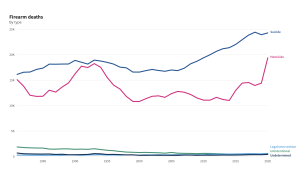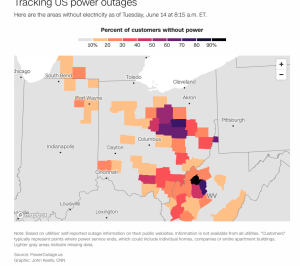How could anyone think a riot would overturn an election and keep an unelected person in office?
That more than two centuries of carefully nurtured democracy could be trashed in a few hours?
18 months ago we watched in stunned disbelief as our Capitol was attacked, police officers were brutalized and beaten, and bizarre characters wandered the halls, stole mementos and put their feet up on desks, ascended to the podium and eerily called for the heads of the Speaker of the House and Vice President.
For me, yesterday’s January 6 hearing made the insanity of it all stunningly clear. The testimony of a very young staffer crystallized how far we’d gone off track, and why.
Cassidy Hutchinson’s placid, calm recounting stood in stark contrast to the events she was describing, none more jarring than her description of then-President Trump’s furious and frantic effort to get his Secret Service detail to open up the Capitol, remove magnetic detectors and thereby allow his “wonderful people” to bring guns, knives, automatic weapons, pistols, bear spray, and spears to wreak mayhem on Congress’ certification of the 2020 election.

Trump’s megalomania, narcissism and bloody-minded pursuit of power at any price was on full display yesterday. Hutchinson’s recounting of agents describing Trump as irate because the agent wouldn’t drive him to the Capitol so he could “let his people in” says it all.
Five police officers died as a result of the insurrection.
Dozens more may well have been killed if the Secret Service had bowed to Trump’s insane demands.
For what?
What made Trump think that he could stay in office, prevent Biden from assuming the Presidency, reject the will of the American people?
How could Trump possibly think he could stay in office? That a bunch of weirdos, military fetishists, tinfoil-hat-wearing simpletons and assorted other nutjobs could turn the United States into a banana republic, one where a strongman could keep power because a few thousand criminally-stupid idiots wanted him to?
Did Trump actually think our entire government, our military, our law enforcement and security and intelligence operations, all of us would stand by and let him stay in the White House? Because a moron wearing a buffalo headdress says so?
Hutchinson’s testimony made it clear Trump is completely detached from reality.
Trump wants power at any price – up to and including killing police officers, destroying our Capitol, and ending the United States of America as we know it.
What does this mean for us?
We are each individually responsible. Ensuring our kids and grandkids live in a free country is up to each of us.
















